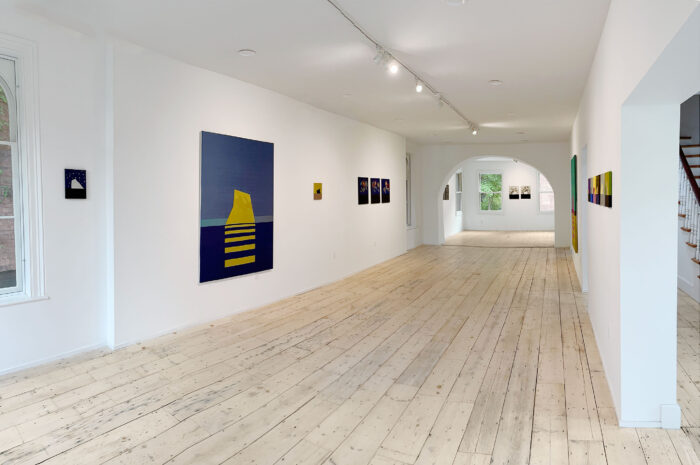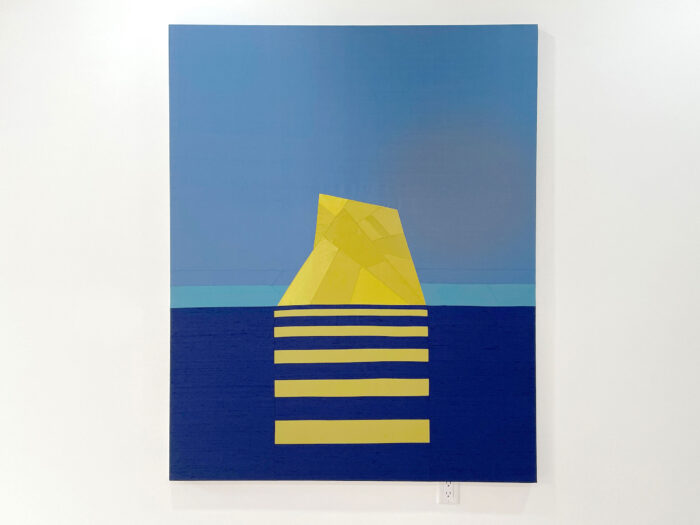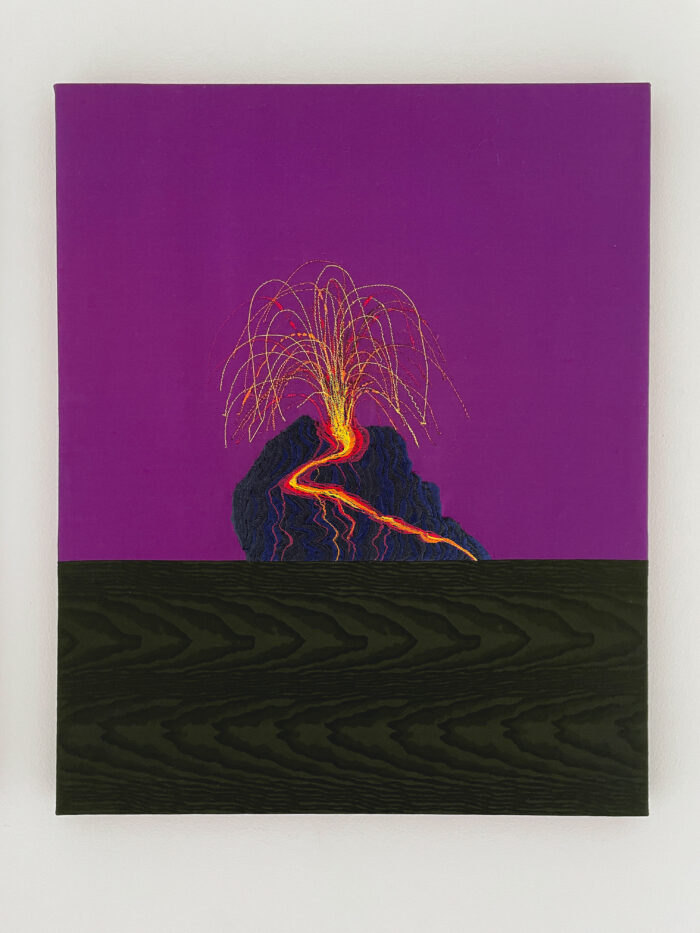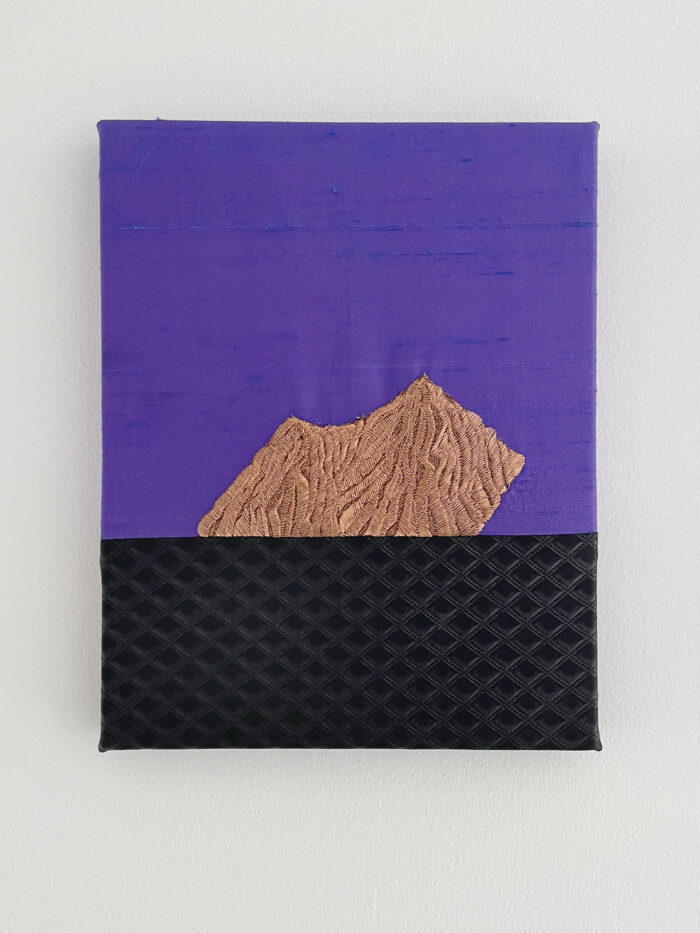
Visitor Center, located in Newburgh, across the bridge from Beacon (and Dia Beacon), is an upstate outpost we should pay attention to. Open roughly two years, the gallery has a large, beautifully lit first floor; it is one of the very few serious galleries in this small city, formerly devoted to the light industry. Visitor Center is currently showing the work of Angelo Filomeno, an Italian-born, New York-based artist who makes painting-like compositions by embroidering semi-abstract images on silk. The overall compositions are simple and direct, but they are also highly elegant, in the modernist tradition of less is more. Usually, each work has an image placed in the center of the composition, backed by simple planes of colored silk. The details of the image are regularly embroidered.

In the long, bright space of the gallery, Filomeno’s works seem almost to glow with a subdued light, likely the consequence of the materials he is using. Most of the work is relatively small, but a few pieces stand out as larger examples. In Island (Blue, Gold, Green) (2022), whose dimensions are 68 by 52 inches, a large green-gold shape, angled on all sides, rises above a dark-blue sea. Beneath the solid form is a series of bars, also green-gold in color, which extend toward the water, gradually widening as they move deeper into the sea. Above, a lighter blue covers just a bit more than half the image. A very elegant work, whose beauty is intensified by the embroidery, Island is a memorable work beginning in ornament and moving into true depth. A much smaller work from the “Island” series, defined by the partial title Island Series (bronze on purple sky) (2020-21), depicts an irregularly angled, stone-like shape, marked by striations, that rises into a dark blue/purple sky from a black mass of water. The starkness of this bold image is striking, and it demonstrates Filomeno’s considerable compositional abilities.

night and day (night) (2021) is a particularly beautiful work. Consisting of a deep, very dark purple sky that takes up three-quarters of the piece, supported by a black band of the earth at the bottom, the image has a gray rock, with a rough surface, rising upward from the middle. The rock must be a volcano, as a bright line, yellow and orange and gold, snakes upward from the lower right of the stone’s mass, cutting across the middle and then rising to the top. Once the luminous thread reaches its highest point, it explodes into the air with a fireworks-like display of golden lines. The ornamental effect is certainly evident, but the beauty of the piece overrides any suggestion of shallowness.

We often consider the adjective “decorative” pejorative in the description, but in Filomeno’s art, that is not the case. Instead, he seeks a balance between ornament and formal functionality, as well as figurative consideration and the attraction of the abstract. His work may look unadorned, even simple, but actually, Filomeno is most deeply attracted to a compelling beauty, aided by the subtle use of color and a deep awareness of elegance as an attribute wanted, even necessary, for itself. In consequence, his series not only repeats but also amplifies the implications of repetition, something he has successfully decided to do. His originality comes from his capacity for archetypal formalism, whose attractions stem from effortless design.
